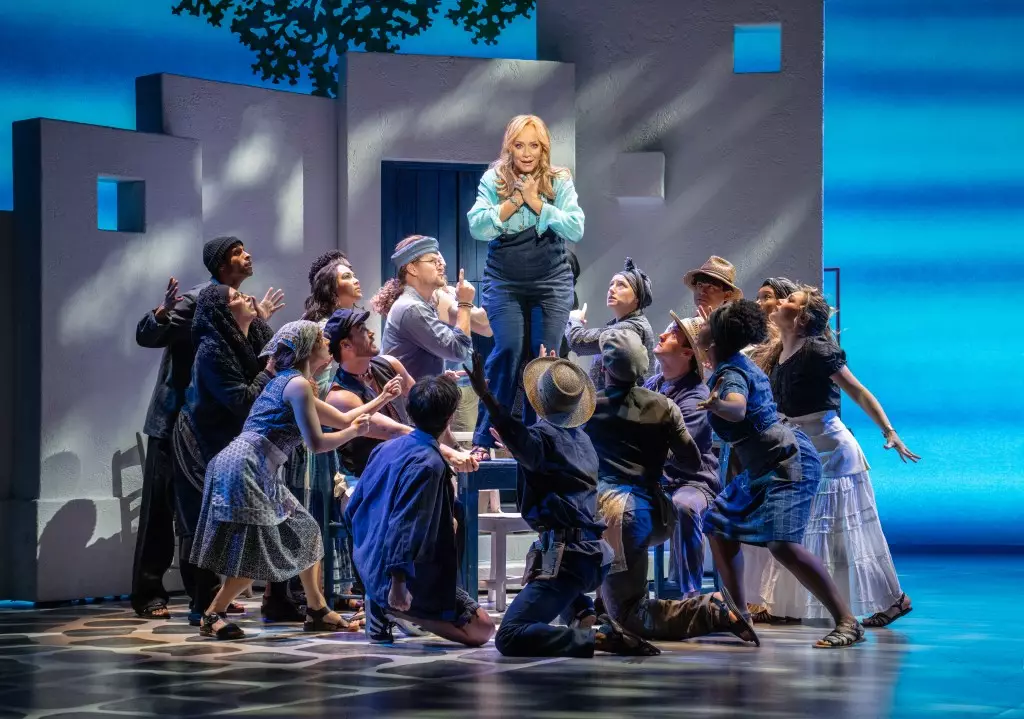Broadway, often seen as a barometer for the cultural pulse of New York City, continuously demonstrates its capacity to adapt and thrive, even amid fluctuating economic conditions and changing audience preferences. Recent box office figures reveal a fascinating interplay: while many long-standing shows experience declines typical of the summer lull, the industry’s resilience shines through with fresh productions like *Mamma Mia!* making a remarkable debut. This phenomenon underscores not just the staying power of proven hits, but the importance of inviting new audiences through inventive revivals and exciting premieres.
The debut of *Mamma Mia!* at the Winter Garden Theatre serves as a compelling case study. Its sold-out preview signals an appetite for nostalgic, yet lively musical escapism. The fact that the show is a limited engagement of six months illustrates a strategic gamble—balancing the nostalgia factor with a sense of urgency that can create a buzz. It’s a reminder that, despite the industry’s challenges, carefully curated new or returning productions can infuse fresh energy into the scene and generate significant box office successes almost immediately. This performance emphasizes that, when executed well, the allure of familiar songs paired with a captivating story can still command audiences in today’s competitive entertainment landscape.
Meanwhile, the longevity of the original *Mamma Mia!*—which played an impressive 14 years—sets an aspirational benchmark. Its history demonstrates that when a musical achieves cultural resonance, it can transcend trends and become part of Broadway’s legacy. The current revival’s promising start hints that nostalgia, when combined with modern staging and marketing, remains a potent tool for drawing crowds, especially in an era where audiences crave comfort and familiarity amid uncertainty.
Economic Dynamics and Audience Engagement Strategies
Analyzing the broader box office landscape reveals a nuanced picture. Most shows experienced a slight dip in ticket sales during the dog days of August—a predictable seasonal slowdown. Even titans like *The Lion King* and *Aladdin* experienced declines, yet still maintained impressive gross earnings. For *Aladdin*, a drop of $178,270 still resulted in a revenue of over $1.4 million. These figures highlight the underlying strength of established franchises; they serve as anchors for the industry’s financial health, providing a steady income flow that sustains additional experimental or riskier projects.
What’s particularly intriguing is the disconnect between ticket prices and occupancy. *Just In Time*, a Bobby Darin biography starring Jonathan Groff, commands the highest average ticket price of nearly $232—a significant investment for theatergoers, yet it manages to sell approximately 56% of available seats. This indicates a segment of the audience willing to pay premium prices for star power and niche narratives, perhaps signaling a shift towards valuing quality and exclusivity over sheer volume. Conversely, shows like *Call Me Izzy* and *Gypsy* are struggling with capacity issues, emphasizing that not all productions can rely solely on star testimonials or nostalgia to fill seats.
From a strategic perspective, how producers manage ticket pricing, marketing, and audience engagement will shape the vitality of Broadway in the coming years. The prominence of blockbuster hits, with gross revenues often exceeding $2 million weekly, demonstrates that investing in proven titles still pays dividends. However, a diversified portfolio that includes smaller, innovative shows might be necessary to sustain long-term growth and attract varied demographics.
Forecasting Broadway’s Future: Innovation Meets Tradition
Despite this season’s modest overall revenue decline, the year-to-date figures hint at a resilient industry adjusting to the ebb and flow of audience interest. A 10% increase in gross revenue compared to last year signifies that Broadway’s core audience remains loyal, while new shows like *Mamma Mia!* can spark additional interest, breathing fresh vitality into the scene.
The challenge moving forward is balancing familiarity with innovation. While blockbuster musicals continue to draw millions, the industry must also cultivate new works that speak to contemporary themes, diverse voices, and evolving cultural norms. Success stories like *Wicked*, *Hamilton*, and *The Lion King* are testaments to the power of iconic narratives, yet their ongoing success must be complemented by daring new productions that push boundaries and expand representation.
Broadway’s future hinges on its ability to blend the tried-and-true with the novel. Whether through revivals, strategic pricing, or brand-new shows that surprise audiences, the path to sustained success lies in harnessing the collective power of tradition and innovation. As long as producers remain willing to adapt and audiences continue to seek immersive storytelling, Broadway will enduringly remain the world’s premier theater destination, continually reinvigorated by new stars, fresh productions, and the timeless magic of live performance.

